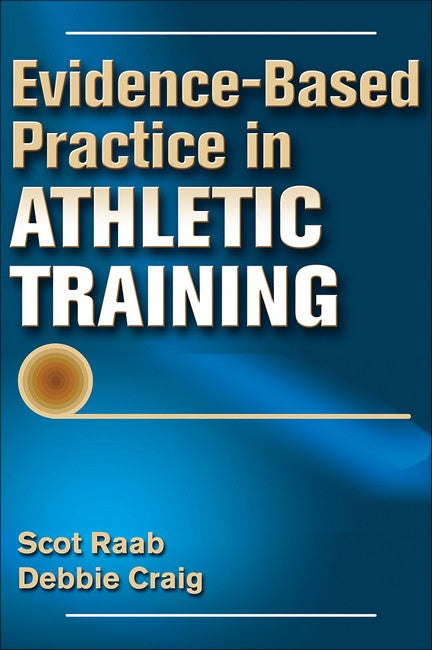Scot Raab, PhD, is an assistant professor in the athletic training education program at Northern Arizona University in Flagstaff. Raab earned his PhD in teaching and administration and has more than 20 years of experience in clinical practice, higher education instruction, and methodological review to contribute to EBP education. He teaches several research courses and mentors undergraduate and graduate students in research projects. Debbie Craig, PhD, is the director of the athletic training education program in the department of physical therapy and athletic training and a professor at Northern Arizona University in Flagstaff. With more than a decade of clinical practice in athletic training and a PhD in educational leadership, Craig is an authority in EBP and research protocols. She teaches EBP to graduate students and is a member of the National Athletic Trainers' Association.
Request Academic Copy
Please copy the ISBN for submitting review copy form
Description
Part I. Introduction Chapter 1. Evidence-Based Practice Models Definition of Evidence-Based Practice Five Steps of Evidence-Based Practice Levels of Evidence Purpose of Evidence-Based Practice in Clinical Athletic Training Summary References Chapter 2. Steps in Evidence-Based Practice Research Step 1: Create a Clinically Relevant and Searchable Question Concerning Your Athlete Step 2: Conduct a Database Search to Find the Best Evidence Step 3: Critically Appraise the Articles or Evidence for Quality Step 4: Critically Synthesize the Evidence to Choose and Implement a Treatment Step 5: Assess the Outcomes by Monitoring the Athlete Search Troubleshooting Tips Summary References Chapter 3. Research Evaluation Reliability Validity Prevalence Independent Test Calculating Sensitivity and Specificity Summary References Part II. Critical Appraisal of Evidence-Based Practice Chapter 4. Diagnostic Research Measurement Methods Summary References Chapter 5. Prognostic Research Prognostic Designs Prognostic Statistics Appraisal Questions Summary References Chapter 6. Systematic Reviews and Meta-Analyses Review of the Evidence Pyramid Definitions of and Differences Among Filtered Reviews Strengths and Processes of Critically Appraised Topics Strengths and Processes of Systematic Reviews Strengths and Processes of Meta-Analyses How to Find Critically Appraised Topics, Systematic Reviews, and Meta-Analyses Practice EBP Searches Summary References Chapter 7. EBP in Daily Clinical Practice Your Practice Based on Evidence Your Practice Based on Your Clinical Experience Your Practice Based on Athlete Preferences and Values Clinical Practice Guidelines Practice Altruism Summary References Chapter 8. Review Outcome Measures Types of Outcome Measures Psychometric Properties of Outcome Measures Communicating Outcomes Assessing Your Self-Practice Adjusting Your Practice Summary References Part III. Research Statistics and Design Chapter 9. Quantitative Research Types of Quantitative Data Types of Quantitative Research Designs Descriptive Statistics Common Inferential Statistics Summary References Chapter 10. Qualitative Studies Types of Qualitative Research Studies Gathering Data Analyzing Data Assessing Trustworthiness Critical Appraisal of Qualitative Research Studies Qualitative Research and Athletic Training Summary References Chapter 11. Research Ethics Ethical Roadblocks Trustworthiness and Conflicts Summary References
"This is a much-needed book in the field of athletic training, as it helps both current and future athletic trainers focus on the importance of evidence-based practice and research. Furthermore, the emphasis on research helps support the validity and reliability of our practice guidelines and profession as a whole." --Doody's Book Review (5 Star Review)

